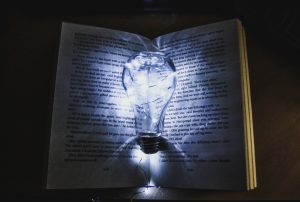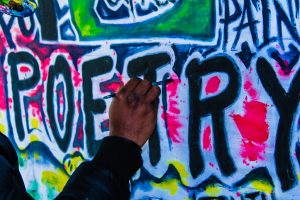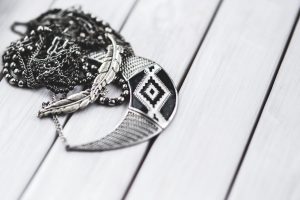by Tamara Coleman
 Since I first heard of Glass Mountain, I knew about Write-A-Thon. Through my fiction editor and my friends in the upper staff, Write-A-Thon was always there, but no one attended. As the years move forward and my involvement with the magazine grew, so did our November fundraiser. If you weren’t with us last year, here’s what you missed and what you can expect this year, starting most importantly with free food! First and foremost, it wouldn’t be a Glass Mountain event without amazing (free) food.
Since I first heard of Glass Mountain, I knew about Write-A-Thon. Through my fiction editor and my friends in the upper staff, Write-A-Thon was always there, but no one attended. As the years move forward and my involvement with the magazine grew, so did our November fundraiser. If you weren’t with us last year, here’s what you missed and what you can expect this year, starting most importantly with free food! First and foremost, it wouldn’t be a Glass Mountain event without amazing (free) food.
Craft Talks: If there’s something I can’t get enough of, it’s craft talks. Part of being a writer for me is the understanding of craft itself. I’m a history major as well as a writer and I’ve had this deep-rooted obsession with understanding how things work and why. Studying craft is a way for me to structure my writing and understand the way words move in this language.
Last year, Write-A-Thon hosted some of the best and brightest from the UH Creative Writing Program. Cait Weiss-Orcutt, Jon Meyer, and Rachel Ballenger facilitated exceptional discussions that included original writing prompts.
 Cait Weiss Orcutt gave great insight on using personal experiences in poetry by utilizing language to world-build within your pieces. Poems have parameters, unique ways of creating and using space in our minds, and she helped us develop ideas through the prompts given in the session. I talked with her after the masterclass ended; we stood in the hall, and I wanted her advice. She talked about writing from a place of discomfort in the talk, but I was still struggling on how to write about my past. I won’t forget the advice she gave me. She said to hunker down and write it—don’t worry about it being good or even poetry—and begin by tapping into that dark place and writing it out. I sat down and started writing and although what I wrote never turned into anything, I did pull some of the material for other projects. One of the characters I fleshed out became the main character of my story Under the Pink which is being published through chapbook in December.
Cait Weiss Orcutt gave great insight on using personal experiences in poetry by utilizing language to world-build within your pieces. Poems have parameters, unique ways of creating and using space in our minds, and she helped us develop ideas through the prompts given in the session. I talked with her after the masterclass ended; we stood in the hall, and I wanted her advice. She talked about writing from a place of discomfort in the talk, but I was still struggling on how to write about my past. I won’t forget the advice she gave me. She said to hunker down and write it—don’t worry about it being good or even poetry—and begin by tapping into that dark place and writing it out. I sat down and started writing and although what I wrote never turned into anything, I did pull some of the material for other projects. One of the characters I fleshed out became the main character of my story Under the Pink which is being published through chapbook in December.
Jon Meyer was our enthusiastic fiction teacher. I had the honor of introducing him before his class began. I’ve always been a fan of Jon. I’d seen him read with Gulf Coast and the University plenty of times and I really connect with his characters in his stories. He has an effortless grasp of craft that shines through his readings and I completely envy it. He broke down fiction to its bare bones by taking something as simple as going to the dentist and othering it. His talk focused on defamiliarization and strangeness, and he encouraged the group of writers to tackle everyday life this way.

The prompt was to take an object, a place, or a ritual of any kind that we think of as usual and other it using language and craft. I ended up writing a little snippet about the necklace I wear around my neck. The pendants are a collection of Arabic prayers and good luck charms my mother and grandmother gave me. Breaking it down to its bare bones and making it something unfamiliar helped me realize that in my writing I can do the same thing to the objects or rituals I have in the story. I love to write magical realism and surrealism, so this talk opened my eyes to new techniques on how to write better in these genres. By first breaking down the object or character that holds the magic into something simple and personal and then using language to build that personal element into something magical that represents something bigger within the story thematically.
Rachel Ballenger was our last speaker of the day. Her talk centered on nonfiction—precisely, how to be comfortable writing nonfiction. She placed emphasis on the fact that you can use flowery language within nonfiction pieces and there are ways to do it well so that you’re deriving from personal or others’ stories rather than retelling life. People cling to the exciting parts of a story and not the mundane of everyday life. I remember this talk specifically because I got to tap into some source material. The writers around me were so eager to share their backstories, and it inspired me to keep writing. That year I was focused on writing about my mixed heritage, and this craft talk helped me break through the mind-numbing writer’s block.

Free Writing: The free-write time was the most useful in the scheduling because I could then take what I learned in the craft talks and implement it into old stories, new stories, or random scenes I wanted to put into future pieces. I combined what I had learned during all of the craft talks, and during the final free write, I typed an entire story (three pages—so not long). The day was rounded off with a small reading, where the bravest of souls would read their first drafts out loud. I remember reading a poem I’d written about not being able to visit my mother’s land, Iraq. This experience was nerve-racking for me. I’m open about my background, but I’d never written about that experience until then. The reading built my confidence in writing about my family.
It was at Write-A-Thon 2017 that I wrote the first draft of the piece that would end up being my first publication Naming the Stars. Through the talks and being able to one-on-one with the master’s students in such a relaxed setting, I was able to formulate and craft the story. I wouldn’t have this story or this publication without Write-A-Thon in 2017, and I’m excited to see what this year’s Write-A-Thon has in store.
Tamara Coleman is the editor of Shards, Glass Mountain’s Online Literary Magazine. She been a part of the magazine for three years, and she helped plan and attended Write-A-Thon 2017.



